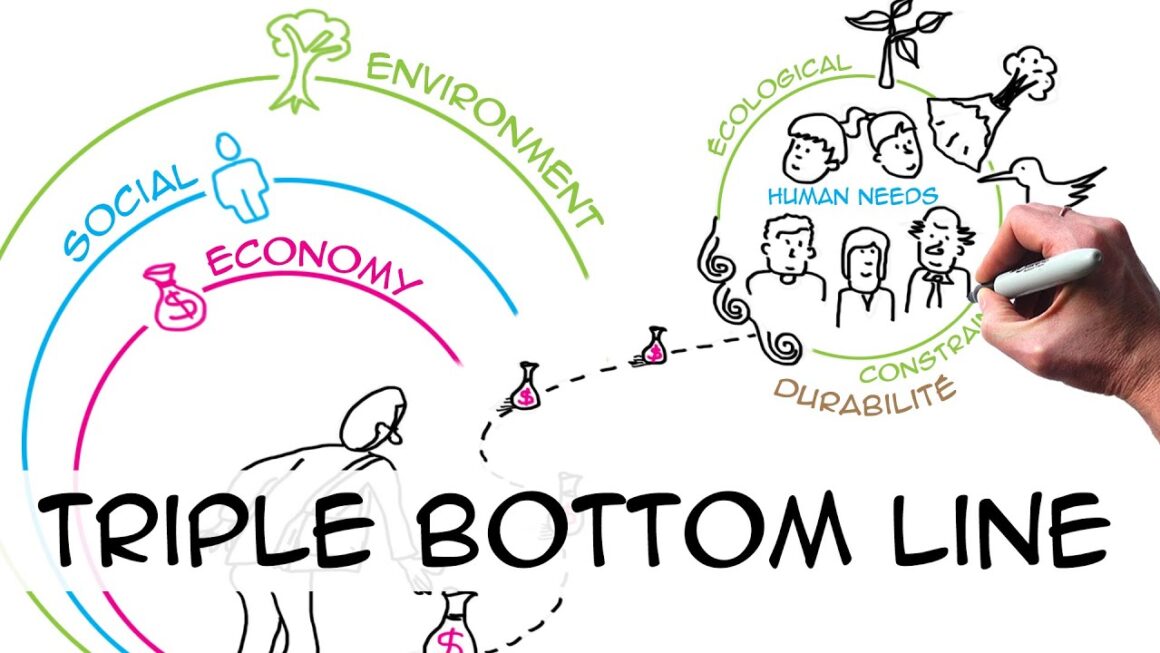Historically, most companies’ time, energy and resources have focused on their bottom lines and securing the best financial performance for their shareholders. But times are changing and, increasingly, people want to do business with socially conscious companies.
They want to work for and support businesses that make money and positively contribute to society, working for the greater good. In response, companies of all sorts and sizes have adopted standards of sustainability and social responsibility — and embraced the triple bottom line.
Defining the triple bottom line
In the mid-1990s, serial entrepreneur and Volans co-founder John Elkington coined the phrase “triple bottom line” as he sought to measure the emerging concept of sustainability performance in corporate America. The triple bottom line expands the traditional accounting framework beyond measuring profits and shareholder value to include an organization’s environmental and social impact.
By focusing on comprehensive investment results along the intertwined dimensions of profits, people and planet, the triple bottom line is a valuable marker of how well a business is meeting its sustainability goals. While the triple bottom line is an accounting and reporting tool, according to Elkington, it is also a means of thinking about the future of capitalism and next-generation market solutions.
According to Andrew Savitz, principal consultant at Sustainable Business Strategies, the triple bottom line “captures the essence of sustainability by both measuring the impact of an organization’s activities on the world … including both its shareholder values and its social, human and environmental capital.”
“The core concept is sustainability here,” added Avinash Chandra, founder and CEO of BrandLoom. “In other words, it can be defined as meeting the needs of the present without compromising the ability of future generations to meet their own needs.”
The 3 P’s of the triple bottom line
The triple bottom line (TBL) is a sustainability-based accounting method that focuses on people, profit and planet. The triple bottom line differs from traditional reporting frameworks because it includes ecological and social aspects that are often difficult to measure.
The idea is that by improving in any one sector, you’ll improve the company overall. The TBL pillars are also commonly called the three P’s: people, planet and profits.
“The triple bottom line can be envisioned as a three-legged stool, with one leg representing people, one leg representing the planet and one leg representing profit,” said Josh Prigge, principal and senior sustainability consultant of Sustridge.
People
This bottom line measures businesses’ impact on human capital. A company using the triple bottom line has a responsibility to not only shareholders but also employees, vendors, customers, the community where it does business and anyone else impacted by the organization, whether directly or indirectly.
It recognizes the interdependency of all the human relationships and interactions that enable the company to operate. This can translate into actions, such as providing quality employee benefits and flexible work schedules to workers, offering opportunities for professional or educational advancement, creating a safe work environment and engaging in fair labor practices.
Planet
Companies following the TBL model work to reduce their ecological footprint. They recognize that the smaller environmental impact a company has, the longer it can operate.
At its most basic level, this involves not producing products that are unsafe or unhealthy for the planet and the people on it. But it also includes reducing your business’s carbon footprint. It involves specific actions, such as using renewable energy sources, reducing energy use, disposing of toxic materials safely and adopting a host of green corporate policies.
Profits
All companies are concerned about their financial standing, but businesses committed to the triple bottom line look at profits in terms of not just what they can do for shareholders, but also how they can help the broader community.
In this model, a company helps stimulate economic growth and create wealth by compensating employees fairly, supporting local suppliers with its business, generating innovation and paying its fair share of taxes. It also makes financially prudent but ethically driven decisions about how and where to source materials, products or labor.
Did you know? The triple bottom line is a sustainability-based accounting method that focuses on people, profit and planet. [Read related: The Best Accounting and Invoice-Generating Software for 2024]
Benefits of the triple bottom line
On its own, the triple bottom line is simply a reporting tool, so it isn’t going to improve society or protect the environment. It can drive change, though, because both people and the planet benefit when a company decides to adopt a socially responsible model.
“Managing a business to a triple bottom line approach makes good sense,” said Samuel Adams, CEO and co-founder of Vert Asset Management. “If you look after your people, including employees, customers, suppliers, neighbors and communities, you are likely to have less employee turnover, more repeat customers, less disputes and more goodwill. If you look after the planet, you are likely to use less resources, which can save you money and create less pollution, which will reduce regulatory problems.”
Chandra pointed out that the triple bottom line can also improve your financial performance, reduce operating costs, enhance your brand image and reputation, increase sales and customer loyalty and boost productivity.
Triple bottom line in practice
Many businesses incorporate triple bottom line principles into their structure. Here are a few companies, in various industries, which hold themselves accountable for their social, environmental and economic impact.
Better World Books: This organization sells used books and donates a portion of the profits to help fund literacy programs and libraries. It has raised more than $33 million for literacy programs and kept millions of used books out of landfills while creating jobs in the process.
DHL: This shipping giant has upgraded its delivery trucks to vehicles that are hybrid, more fuel-efficient or capable of running on alternative energy. Its Go Green initiative streamlines logistical operations and has trucks take the shortest route.
It also implements a host of other practices to secure its status as a good neighbor. This includes things like supporting United Nations disaster management efforts, helping airports get ready for natural disasters and partnering with international organizations to improve the education of children and young people.
Glassybaby: This company, which sells hand-blown votives and drinking glasses, was founded by Lee Rhodes, a three-time cancer survivor, as a way to support other cancer patients, many of whom she had seen struggle to afford basic needs during treatment. The company donates $3 from the sale of each item to charities through the Glassybaby White Light Fund, its charitable giving program.
It has donated over $13 million since its establishment in 2001 to some 1,500 nonprofits helping people, animals and the planet. Additionally, its products are all made in the United States and its packaging is made from 100 percent recycled materials. The company’s artisans are well compensated and receive full benefits if they work 30-plus hours per week.
Patagonia: This manufacturer of outdoor clothing and gear actively encourages customers to minimize their consumerism and environmental footprint. It donates 10 percent of its profits to environmental causes and groups, runs the largest clothing repair facility in North America and encourages customers to return worn-out clothing so it can be recycled or repurposed.
It does not use any chemicals in its production processes and often uses recycled, organic or environmentally sound materials. It also offers employees ways to get involved with the company’s environmental and sustainability efforts in addition to several quality-of-life resources, such as in-office child care, flexible work schedules and the day off on Election Day. Patagonia has a corporate venture capital fund, which invests in environmentally and socially responsible startup companies.
South Mountain Company: This architecture, engineering, building and renewable energy firm is employee-owned and committed to progressive business practices. It hires locally, provides living wages and offers quality benefits.
It uses environmentally friendly building practices, is committed to making zero-energy buildings and serves as one of the top solar power integrators in Martha’s Vineyard. The company donates 10 percent of its profits to charity and another 10 percent to pro bono work.
South Mountain is focused on becoming a zero-net-energy and zero-waste business and has developed a methodology to measure its overall carbon footprint, which has led to the implementation of new carbon footprint reduction initiatives.










